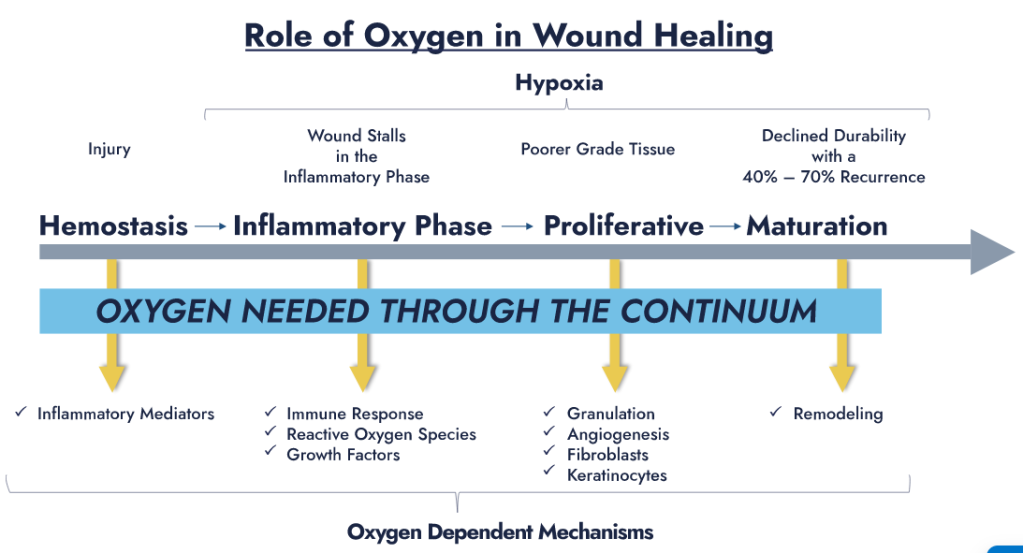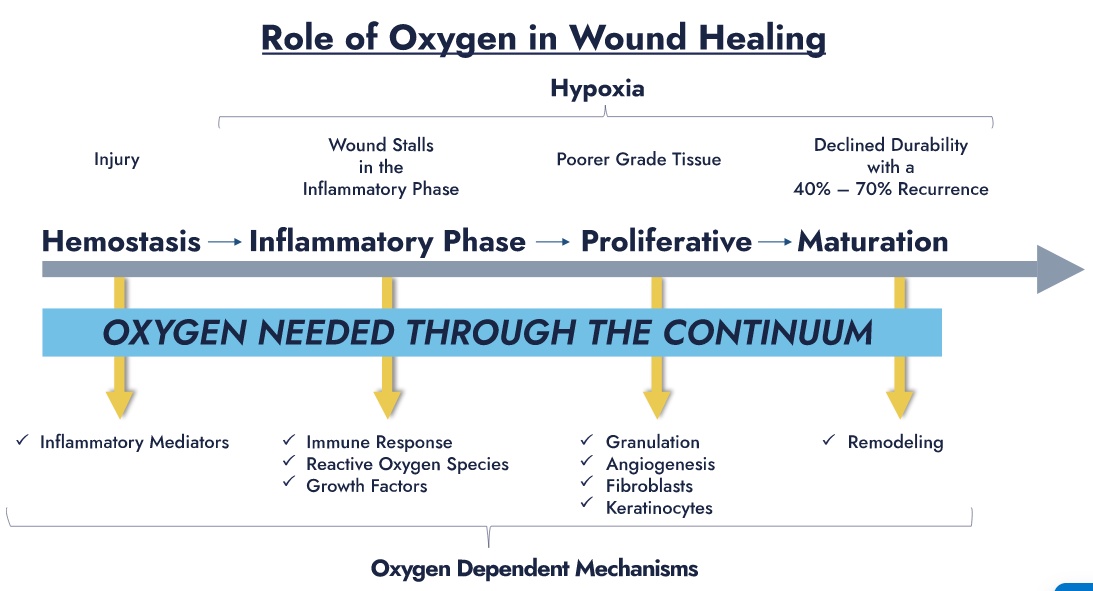For individuals living with diabetes, leg infections can pose serious health risks and complications, often leading to prolonged healing times and increased susceptibility to further infections. Topical wound oxygen therapy emerges as a promising treatment option to address diabetic leg infections effectively. Let's explore the challenges of leg infections in diabetic individuals and the potential benefits of topical wound oxygen therapy in promoting healing and reducing complications.

Understanding Diabetic Leg Infections:
Diabetic individuals are at higher risk of developing leg infections due to factors such as impaired circulation, nerve damage (neuropathy), and compromised immune function. Minor injuries or wounds on the legs can quickly escalate into infections, leading to complications such as cellulitis, abscesses, or even diabetic foot ulcers. Prompt and effective treatment is essential to prevent the progression of infections and minimize the risk of severe complications, including amputation.
Challenges in Treatment:
Traditional treatments for leg infection in diabetic, such as antibiotics and wound debridement, may not always be sufficient to address the underlying issues or promote timely healing. Factors such as poor blood flow, tissue hypoxia (low oxygen levels), and bacterial biofilm formation can impede the effectiveness of standard treatments, prolonging the healing process and increasing the risk of recurrent infections.
Topical Wound Oxygen Therapy:
Topical wound oxygen therapy, also known as oxygen wound therapy or topical oxygen therapy, offers a novel approach to treating diabetic leg infections by delivering high concentrations of oxygen directly to the wound site. This non-invasive treatment modality involves the application of a specialized dressing or chamber that delivers oxygen gas or oxygen-rich solutions to the wound, promoting healing and combating infection through several mechanisms:
- Enhanced Oxygenation: Oxygen plays a critical role in the wound healing process by promoting cellular metabolism, angiogenesis (formation of new blood vessels), and collagen synthesis. Topical oxygen therapy increases oxygen levels in the wound bed, creating an environment conducive to tissue repair and regeneration.
- Antimicrobial Effects: High levels of oxygen have antimicrobial properties, inhibiting the growth and proliferation of bacteria and other pathogens commonly associated with diabetic leg infections. By reducing bacterial load and biofilm formation, topical oxygen therapy helps control infection and prevent recurrence.
- Anti-inflammatory Benefits: Oxygen therapy has anti-inflammatory effects, reducing swelling, pain, and tissue damage associated with diabetic leg infections. By modulating inflammatory responses, topical oxygen therapy promotes a more favorable wound healing environment and accelerates recovery.
Conclusion:
Topical wound oxygen therapy represents a promising adjunctive treatment option for diabetic leg infections, offering potential benefits in promoting healing, controlling infection, and reducing complications. By addressing underlying issues such as tissue hypoxia and bacterial colonization, oxygen therapy provides a targeted and non-invasive approach to wound care, complementing traditional treatment modalities and improving outcomes for diabetic individuals at risk of leg infections. As ongoing research and clinical studies continue to elucidate the efficacy and safety of topical oxygen therapy, it holds great promise as a valuable tool in the management of diabetic foot complications and other chronic wounds.


No comments yet